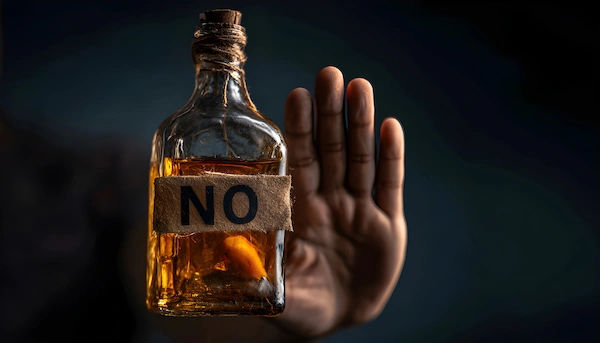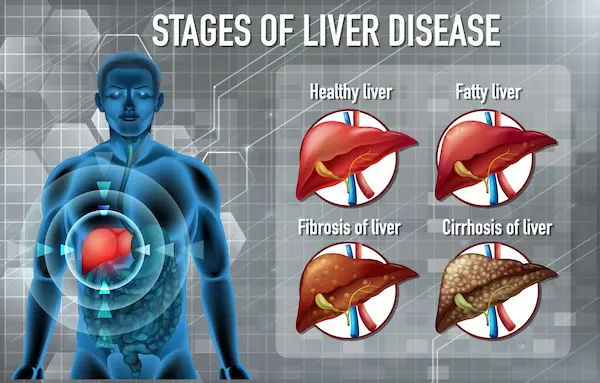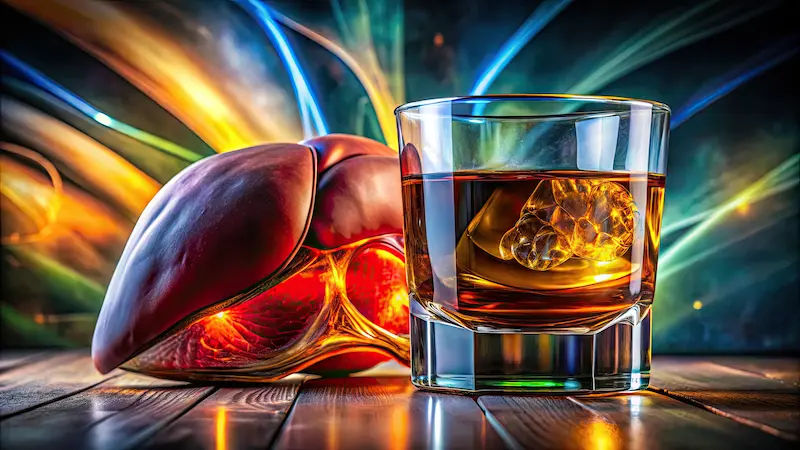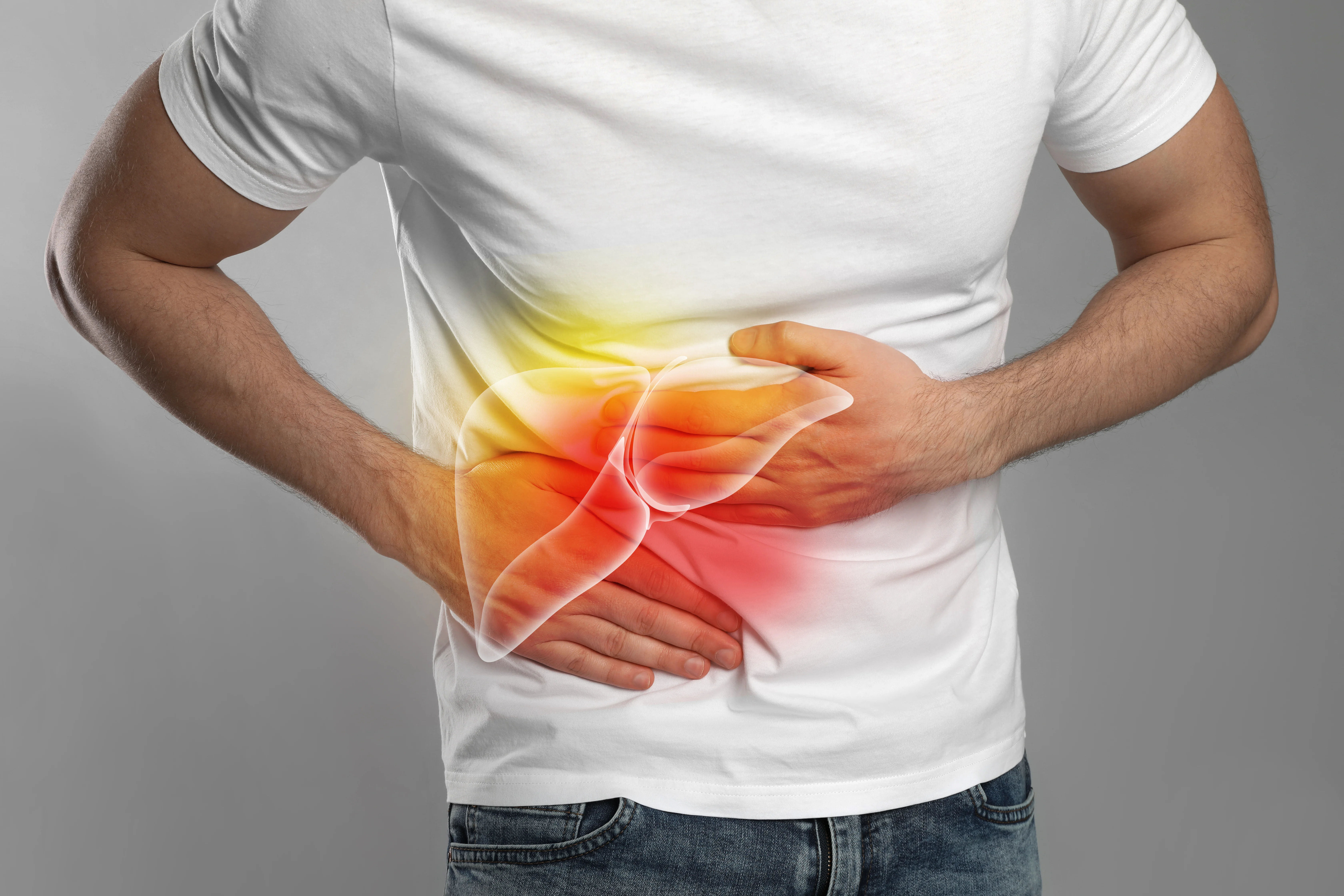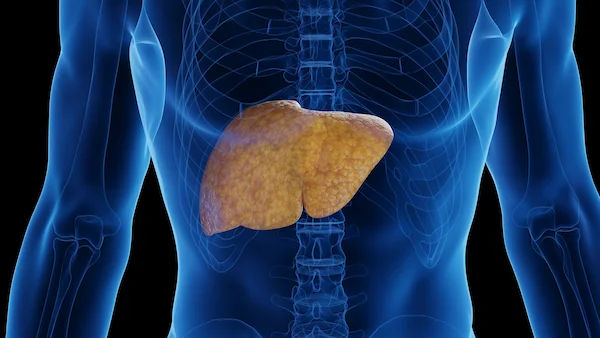The Sobering Link Between Binge Drinking and Liver Disease
Discover how binge drinking directly causes liver disease, the stages of alcoholic liver disease, symptoms, diagnosis, treatment, and prevention tips to protect your liver.

Written by Dr. M L Ezhilarasan
Reviewed by Dr. Dhankecha Mayank Dineshbhai MBBS
Last updated on 22nd Oct, 2025

Introduction
We often associate liver disease with a lifetime of heavy drinking. But what if the danger isn't just about daily consumption? Emerging research reveals a terrifying truth: binge drinking is a direct and powerful driver of alcoholic liver disease (ALD). This pattern of consumption, common among young adults and even weekend warriors, can inflict severe damage on your liver, often before you even notice something is wrong. This article cuts through the myths to explore how binge drinking harms your liver, the stages of ALD, the critical warning signs to watch for, and most importantly, the steps you can take to protect your body's most vital detoxifier. Understanding this link is the first step toward making informed choices for your long-term health.
What Exactly is Binge Drinking? Defining the Danger
Binge drinking is more than just having a few too many at a party. It's a specific and dangerous pattern of alcohol consumption defined by the National Institute on Alcohol Abuse and Alcoholism (NIAAA) as a pattern that brings blood alcohol concentration (BAC) to 0.08 grams percent or above. For most adults, this typically occurs after:
- 4 or more drinks in about 2 hours for women.
- 5 or more drinks in about 2 hours for men.
A "drink" refers to a standard unit: 12 ounces of beer (5% ABV), 5 ounces of wine (12% ABV), or 1.5 ounces of distilled spirits (40% ABV).
Binge Drinking vs. Alcohol Use Disorder: What's the Difference?
It's crucial to distinguish between the two. Binge drinking is a behaviour pattern, while Alcohol Use Disorder (AUD) is a medical diagnosis characterised by an impaired ability to stop or control alcohol use despite adverse social, occupational, or health consequences. A person can binge drink without having AUD—think of the university student who drinks heavily on Saturdays but doesn't touch alcohol during the week. However, binge drinking is a significant risk factor for developing AUD later on. The liver doesn't discriminate; damage can occur from repeated binge episodes, even if you don't drink every day.
Your Liver: The Body's Silent Powerhouse
To understand the damage, you must appreciate the liver's role. This football-sized organ is a biochemical factory, performing over 500 vital functions.
Key Functions: Filtration, Metabolism, and Storage
Your liver is responsible for:
- Filtering Toxins: Processing and removing harmful substances from your blood, including alcohol.
- Metabolising Nutrients: Breaking down fats, proteins, and carbohydrates for energy.
- Producing Bile: Essential for digesting fats and absorbing vitamins.
- Storing Vitamins and Iron: Managing your body's reserves of key nutrients.
How Alcohol Overwhelms the Liver's Defences
When you drink, your liver prioritises metabolising alcohol above all else. Enzymes in the liver cells (alcohol dehydrogenase and CYP2E1) break down ethanol into acetaldehyde—a highly toxic and carcinogenic compound. This acetaldehyde is then quickly converted into acetate, which is eventually broken down into water and carbon dioxide. During a binge, the liver is flooded with alcohol. The enzymes become saturated, causing a dangerous build-up of toxic acetaldehyde. This compound damages liver cells, promotes inflammation, and generates oxidative stress—essentially overwhelming the liver's capacity to protect itself and leading to immediate injury.
The Three Stages of Alcoholic Liver Disease
ALD is a progressive condition that develops in three distinct, overlapping stages.
Stage 1: Alcoholic Fatty Liver Disease (Steatosis)
This is the earliest and most common form of ALD, affecting over 90% of heavy and binge drinkers. It occurs when the metabolism of alcohol disrupts the liver's normal fat-burning process, causing fat droplets to accumulate inside liver cells (hepatocytes).
Causes and Reversibility
The good news is that alcoholic fatty liver disease is largely reversible. It can develop after even a single binge drinking session. The primary cause is the toxic by-products of alcohol metabolism altering the liver's biochemistry. The most effective treatment for fatty liver is complete abstinence from alcohol. With abstinence, the liver can often clear out the excess fat within a few weeks to months, returning to normal function.
Stage 2: Alcoholic Hepatitis
If drinking continues, persistent inflammation can lead to alcoholic hepatitis—the literal inflammation of the liver. This is not the same as infectious hepatitis (viral hepatitis). It ranges from mild to life-threatening.
Symptoms and Medical Emergency
Symptoms may include jaundice (yellowing of the skin and eyes), abdominal pain and swelling, nausea, vomiting, fever, and fatigue. Severe alcoholic hepatitis is a medical emergency with a high mortality rate and requires immediate hospitalisation. Alcoholic hepatitis symptoms are a clear sign that your liver is in serious distress.
Stage 3: Alcoholic Cirrhosis
The final and most severe stage is cirrhosis. In response to chronic inflammation, the liver attempts to repair itself by forming scar tissue (fibrosis). Over time, this scar tissue replaces healthy liver tissue, becoming widespread and irreversible—a state known as cirrhosis.
Scarring, Liver Failure, and Long-Term Outlook
A cirrhotic liver becomes hard, nodular, and unable to function. This can lead to liver failure, portal hypertension (high blood pressure in the liver's veins), internal bleeding, and a significantly increased risk of liver cancer. While the damage from cirrhosis is permanent, stopping alcohol completely can prevent further progression and allow the remaining healthy tissue to sustain life. In advanced cases, a liver transplant may be the only option.
Symptoms of Alcohol-Related Liver Damage: Listening to Your Body
The liver has no pain nerves, so early symptoms of alcoholic liver disease are often subtle or non-existent. As damage progresses, warning signs include:
- Persistent fatigue and weakness
- Loss of appetite and unexplained weight loss
- Nausea or vomiting
- Abdominal pain or tenderness, especially on the right side
- Spider-like blood vessels on the skin (spider angiomas)
- Yellowing of the skin and eyes (jaundice)
- Dark urine and pale stool
- Swelling in the legs and abdomen (oedema and ascites)
If you experience any of these signs of liver damage from alcohol, especially jaundice, it is crucial to seek medical advice immediately. If symptoms persist, consult a doctor online with Apollo24|7 for further evaluation.
Diagnosis: How Doctors Detect Liver Disease
If liver disease is suspected, a doctor will typically start with:
- Blood Tests (Liver Function Tests - LFTs): These measure levels of liver enzymes (AST, ALT), bilirubin, and proteins. Elevated enzymes indicate inflammation or damage.
Imaging Tests: An ultrasound, CT scan, or MRI can reveal fat accumulation, scar tissue, or physical changes to the liver. - Liver Biopsy: In some cases, a small sample of liver tissue is removed for analysis to confirm the diagnosis and stage the disease accurately. Apollo24|7 offers convenient home collection for tests like Liver Function Tests (LFTs), making initial screening more accessible.
Treatment and Recovery: Can the Liver Heal?
The liver possesses a remarkable ability to regenerate—but only if given the chance.
The Absolute First Step: Stopping Alcohol Consumption
The cornerstone of treating any stage of ALD is complete and permanent abstinence from alcohol. This is non-negotiable. For those with AUD, this may require supervised detoxification, counselling, and support groups.
Consult a Specialist for Personalised Advice
Medications, Lifestyle Changes, and Advanced Care
Treatment is supportive and may include:
- Corticosteroids to reduce liver inflammation in severe hepatitis.
- Nutritional Support: Malnutrition is common; a healthy, balanced diet is vital.
- Medications for complications: Such as diuretics for fluid build-up.
- Liver Transplant: Considered for patients with end-stage cirrhosis who have successfully abstained from alcohol.
Prevention: Strategies for Safer Drinking and Liver Health
The best treatment is prevention. To protect your liver:
- Follow Low-Risk Guidelines: Stick to moderate drinking (up to 1 drink/day for women, 2 for men) and avoid binge episodes entirely.
- Have Alcohol-Free Days: Ensure your liver has regular breaks to recover.
- Stay Hydrated and Eat: Never drink on an empty stomach.
- Get Regular Check-ups: If you have a history of binge drinking, discuss liver function tests with your doctor.
- Prioritise Overall Health: Maintain a healthy weight, exercise, and avoid mixing alcohol with other medications or drugs.
Conclusion: Your Liver's Health is in Your Hands
The connection between binge drinking and alcoholic liver disease is undeniable and alarming. It shatters the myth that only lifelong daily drinkers are at risk. Each binge drinking episode is an assault on your liver, pushing it from a reversible fatty state toward irreversible inflammation and scarring. The silver lining is the liver's incredible resilience. By understanding the risks, recognising the silent symptoms, and making the conscious choice to avoid binge drinking, you hold the power to prevent this devastating disease. Your liver works tirelessly for you; it's time to return the favour. If you're concerned about your drinking patterns or liver health, take the first step today by speaking with a healthcare professional.
Consult a Specialist for Personalised Advice
Consult a Specialist for Personalised Advice

Dr. Syed Ismail Ali
General Practitioner
7 Years • MBBS
Hyderabad
Apollo 24|7 Clinic, Hyderabad

Dr Syed Mateen Pasha
General Physician
2 Years • MBBS
Bengaluru
PRESTIGE SHANTHINIKETAN - SOCIETY CLINIC, Bengaluru

Dr. Anand Ravi
General Physician
2 Years • MBBS
Bengaluru
PRESTIGE SHANTHINIKETAN - SOCIETY CLINIC, Bengaluru

Dr. Ashita Kuruvilla
General Physician/ Internal Medicine Specialist
7 Years • MBBS
East Midnapore
VIVEKANANDA SEBA SADAN, East Midnapore

Dr. Debdatta Pati
Psychiatrist
18 Years • MBBS, DPM, MD (PSYCHIATRY)
Kolkata
MCR SUPER SPECIALITY POLY CLINIC & PATHOLOGY, Kolkata
Consult a Specialist for Personalised Advice

Dr. Syed Ismail Ali
General Practitioner
7 Years • MBBS
Hyderabad
Apollo 24|7 Clinic, Hyderabad

Dr Syed Mateen Pasha
General Physician
2 Years • MBBS
Bengaluru
PRESTIGE SHANTHINIKETAN - SOCIETY CLINIC, Bengaluru

Dr. Anand Ravi
General Physician
2 Years • MBBS
Bengaluru
PRESTIGE SHANTHINIKETAN - SOCIETY CLINIC, Bengaluru

Dr. Ashita Kuruvilla
General Physician/ Internal Medicine Specialist
7 Years • MBBS
East Midnapore
VIVEKANANDA SEBA SADAN, East Midnapore

Dr. Debdatta Pati
Psychiatrist
18 Years • MBBS, DPM, MD (PSYCHIATRY)
Kolkata
MCR SUPER SPECIALITY POLY CLINIC & PATHOLOGY, Kolkata
More articles from Alcoholic Liver Disease
Frequently Asked Questions
Can you get cirrhosis from binge drinking?
Yes, absolutely. Repeated binge drinking episodes cause ongoing inflammation and liver cell death. Over time, this leads to fibrosis (scarring), which can progress to cirrhosis, even if you don't drink alcohol every single day.
How long does it take to get liver disease from drinking?
There's no set timeline, as it depends on genetics, sex, weight, and overall health. However, alcoholic fatty liver disease can develop after a single binge drinking session. Progressing to more severe stages like hepatitis or cirrhosis typically requires years of sustained heavy or binge drinking.
Is binge drinking once a week bad for your liver?
Yes, binge drinking once a week is harmful. It repeatedly subjects your liver to a toxic overload of alcohol and acetaldehyde, preventing it from fully recovering. This cyclical damage significantly increases your risk of developing progressive alcoholic liver disease compared to drinking moderately or not at all.
What are the first signs of liver damage from alcohol?
The early signs of alcoholic liver disease are often vague. They include persistent fatigue, general malaise, and dull discomfort in the upper right abdomen. More apparent symptoms like jaundice (yellowing skin/eyes) appear only after significant damage has occurred.
Can damage from alcoholic fatty liver be reversed?
Yes, in most cases, alcoholic fatty liver disease is reversible. The liver can heal itself if the source of the damage—alcohol—is removed. Complete abstinence from alcohol, combined with a healthy diet, can allow the liver to metabolise the stored fat and return to normal function within weeks or months.
